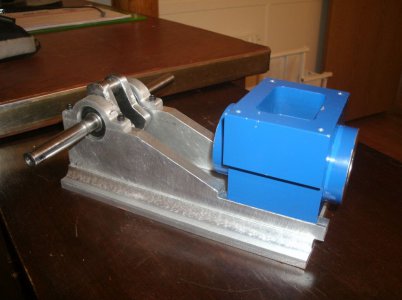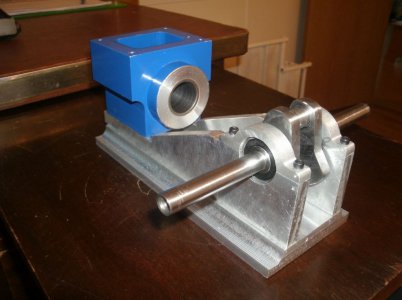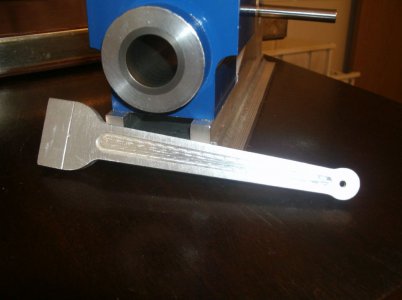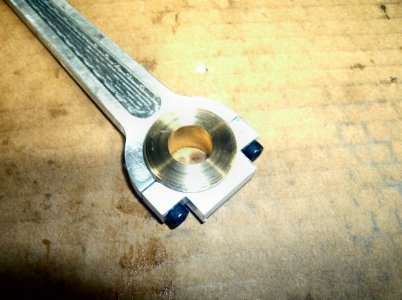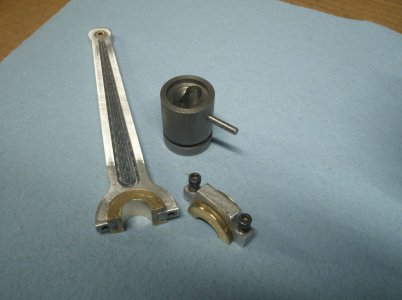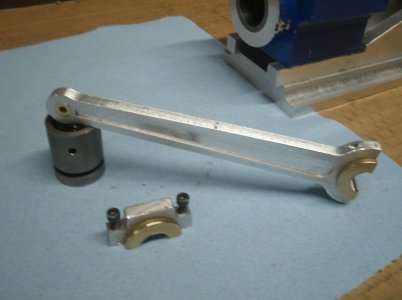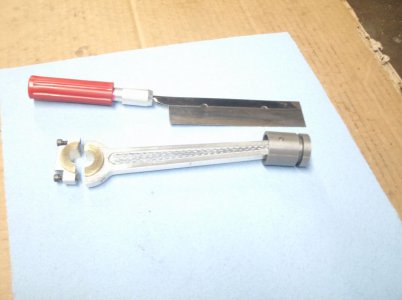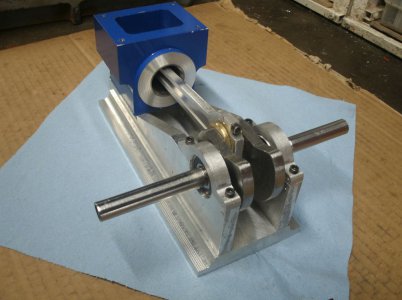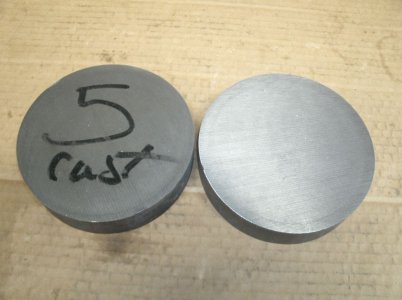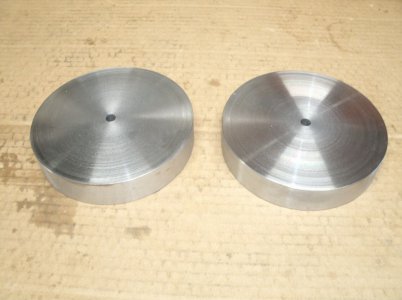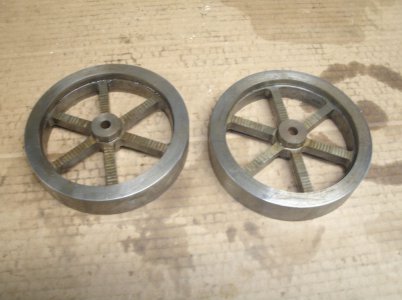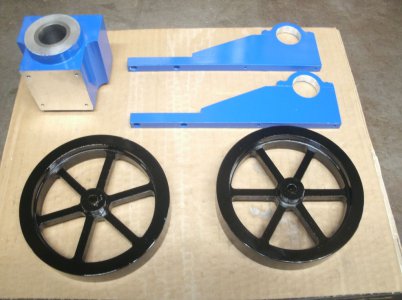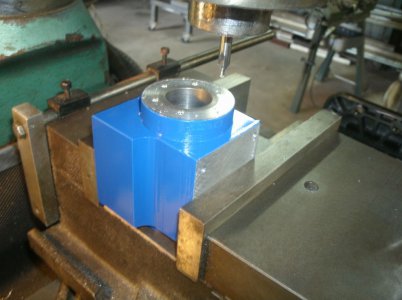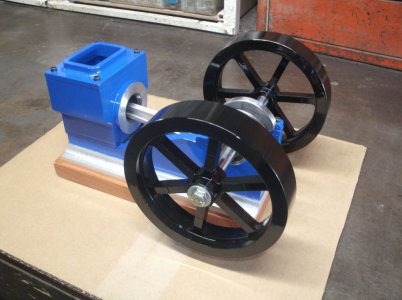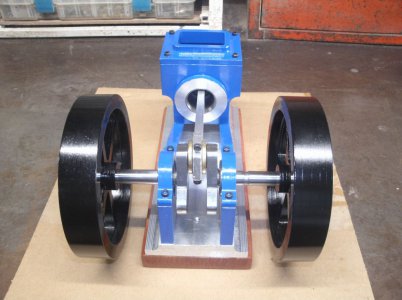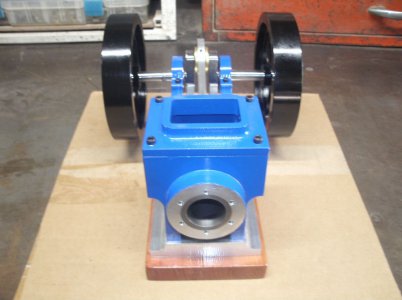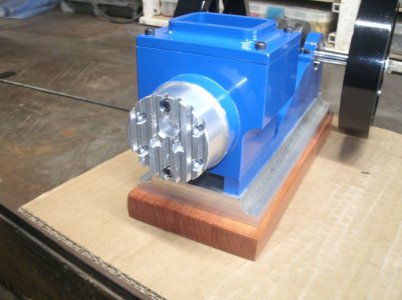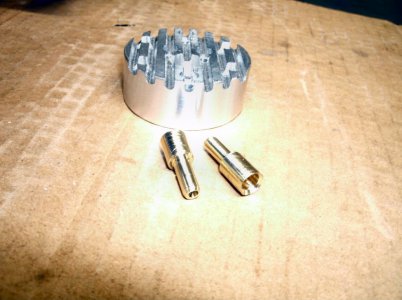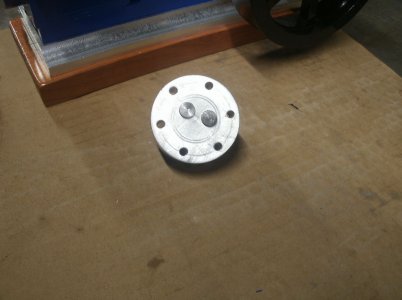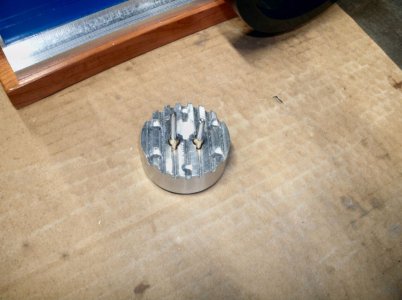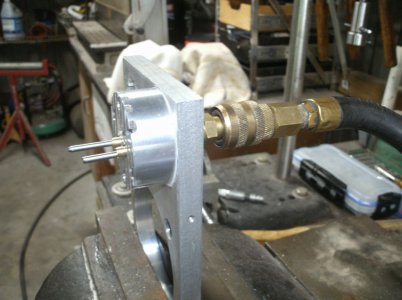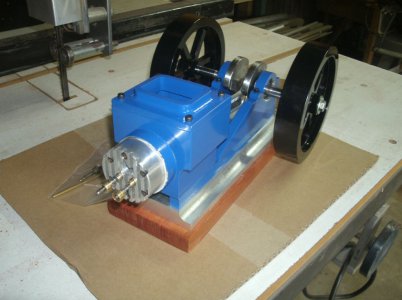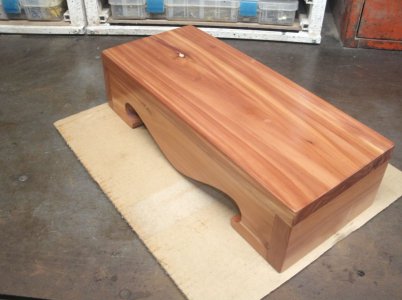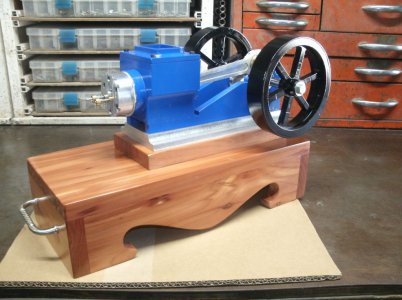- Joined
- Feb 2, 2014
- Messages
- 1,059
I didn't get a lot done today as I was having problems with my X axis power feed. I did get it going for now but it won't last long.
Engine base plate is the next item to be made so I can tie everything together and make sure things will fit. I thought 1/2" aluminum plate would be about right but I didn't have any pieces large enough. I do have some 1/4" plate but I don't think that would be rigid enough and counter sinking screws up into the bottom would not leave much material for holding. I do have some aluminum plate that measures 0.669 but it is not square or true to any surface. I did cut it close to the width I wanted and then over to the mill to true it up.
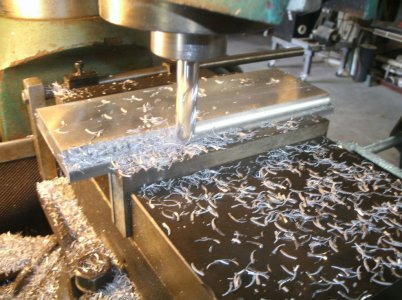
Here it is almost ready for some holes with some fancy side cuts.
That's all for today
Thanks for looking
Ray
Engine base plate is the next item to be made so I can tie everything together and make sure things will fit. I thought 1/2" aluminum plate would be about right but I didn't have any pieces large enough. I do have some 1/4" plate but I don't think that would be rigid enough and counter sinking screws up into the bottom would not leave much material for holding. I do have some aluminum plate that measures 0.669 but it is not square or true to any surface. I did cut it close to the width I wanted and then over to the mill to true it up.

Here it is almost ready for some holes with some fancy side cuts.
That's all for today
Thanks for looking
Ray


